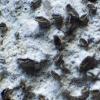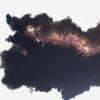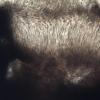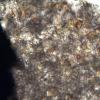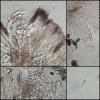
24-12-2025 17:08
Hulda Caroline HolteHello, I have found this propoloid ascomycete on

21-12-2025 09:32
Hello.A tiny ascomycete found embedded in wood in

21-12-2025 21:32
Pol DebaenstHello, Garden, Burgweg 19, Veurne, BelgiumOn 10/1

22-12-2025 23:38
Patrice TANCHAUDBonsoir, récolte sur un mur en pierre, apothéci

22-12-2025 00:47
Patrice TANCHAUDBonsoir, récolte à proximité du milieu dunaire
I have the feeling of deja vu about this fungus, not that I found it before but certainly I saw photos of this (or similar) species (maybe here at AscoFrance). It grew side by side, on calcareous rock, with a lirellate lichen of the genus Opegrapha. Any hint where to look for?
Thanks in advance,
zaca
Hi Zacarias,
Without microscopical informations, it's really almost impossible, unfortunately.
Alain
Thanks for your comment. I thought it would be easy.
I intend to do the microscopy, though it is not possible now.
Best regards,
zaca
I wish a very good new year to all the participants in this forum,
zaca
